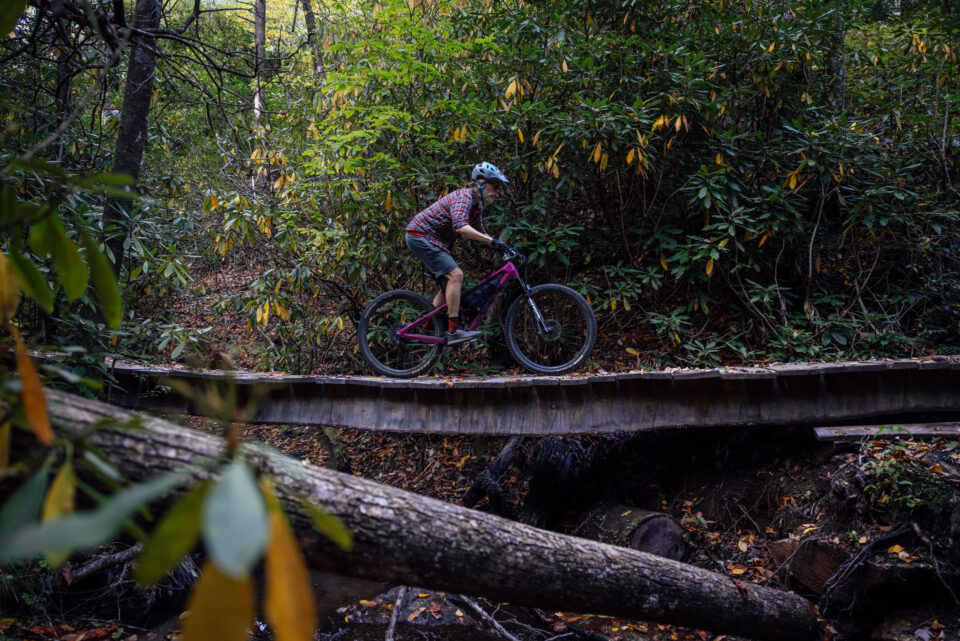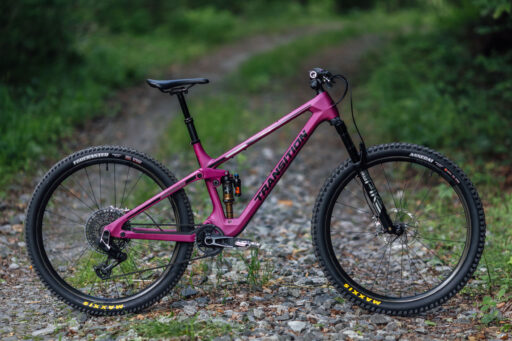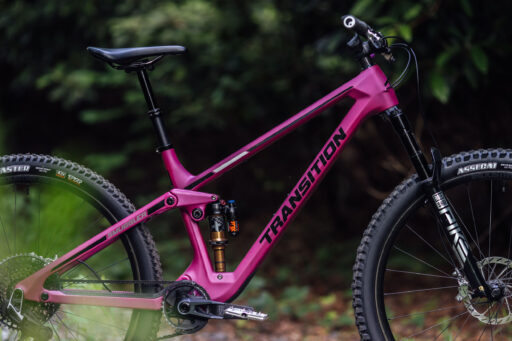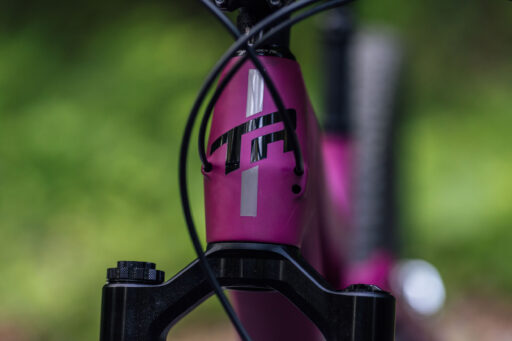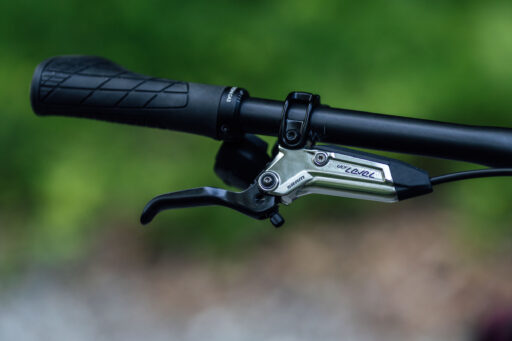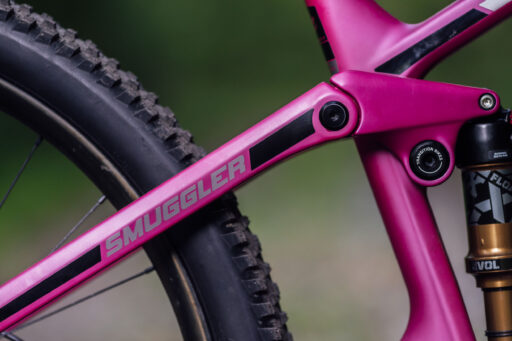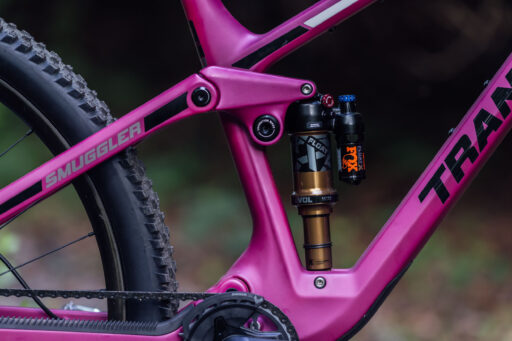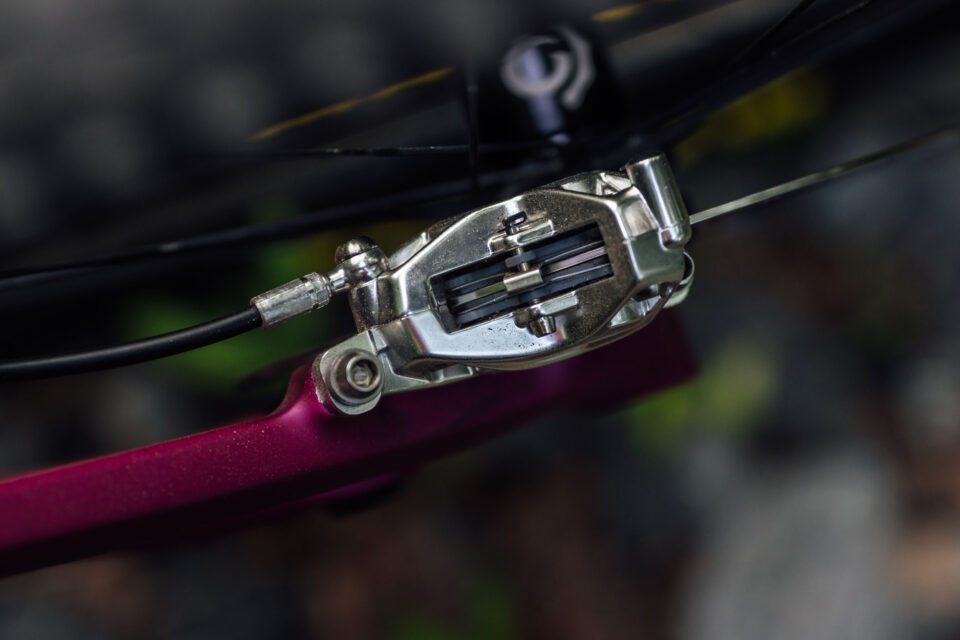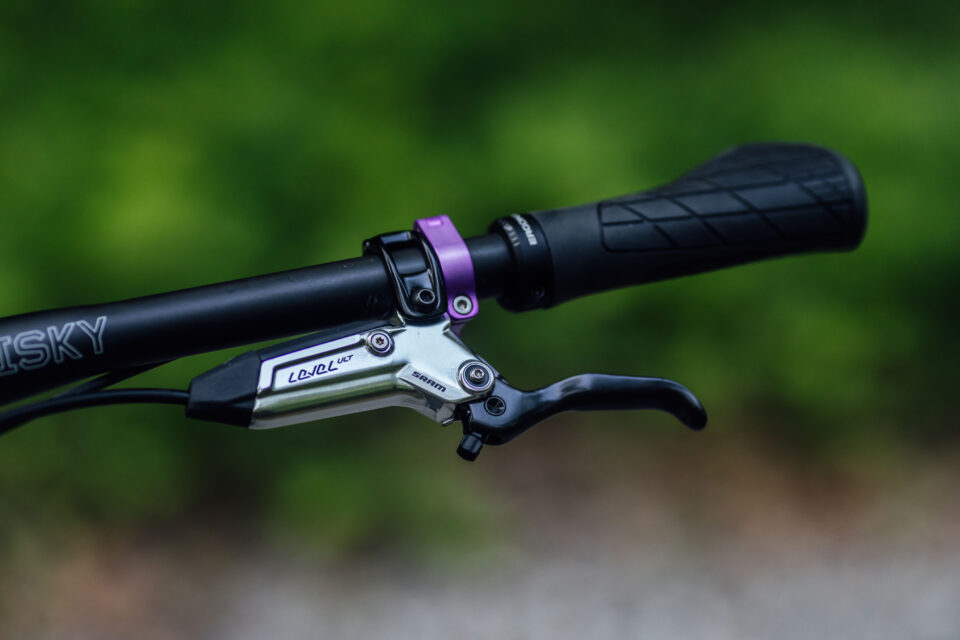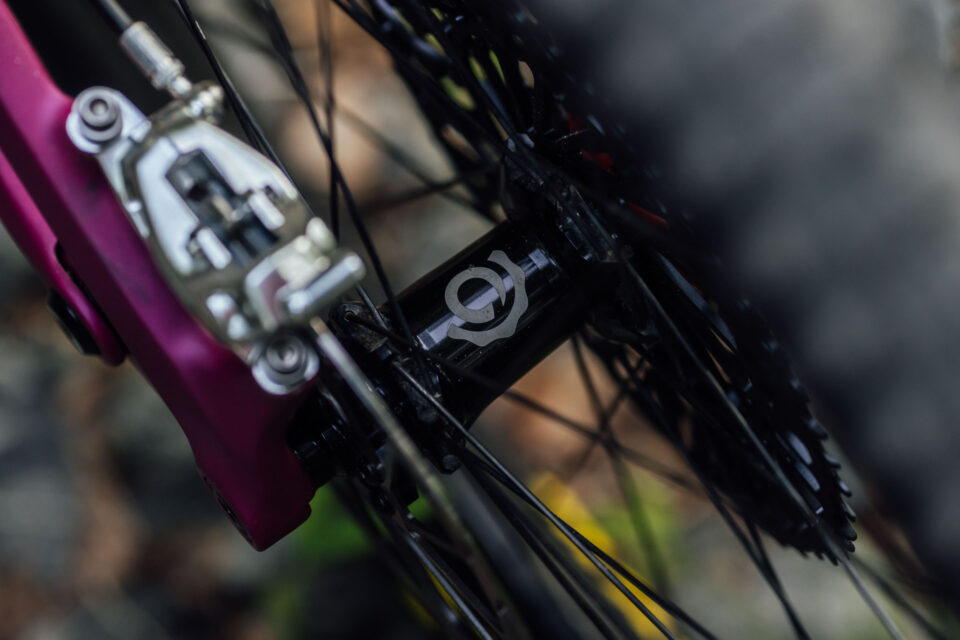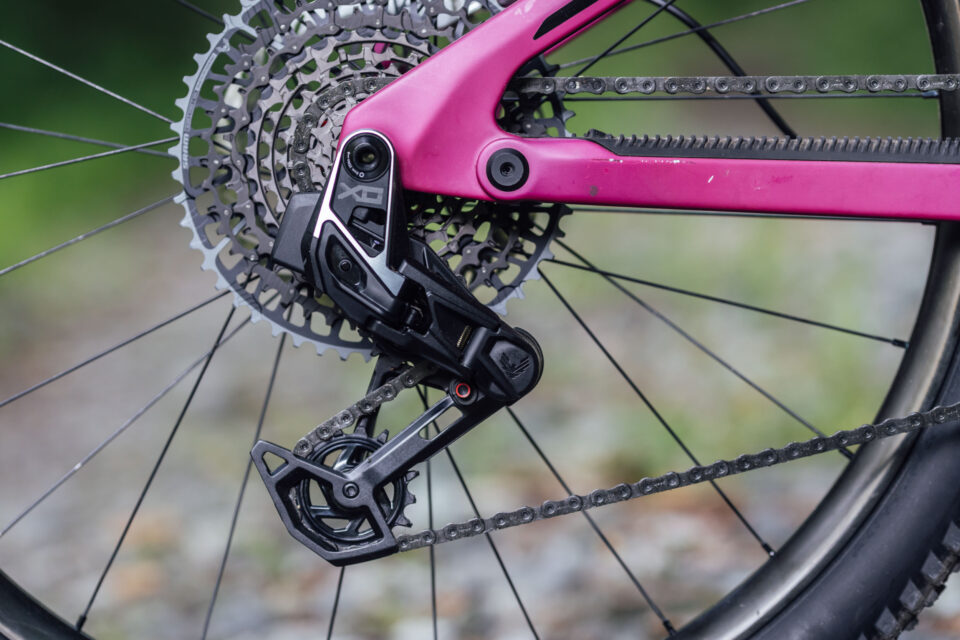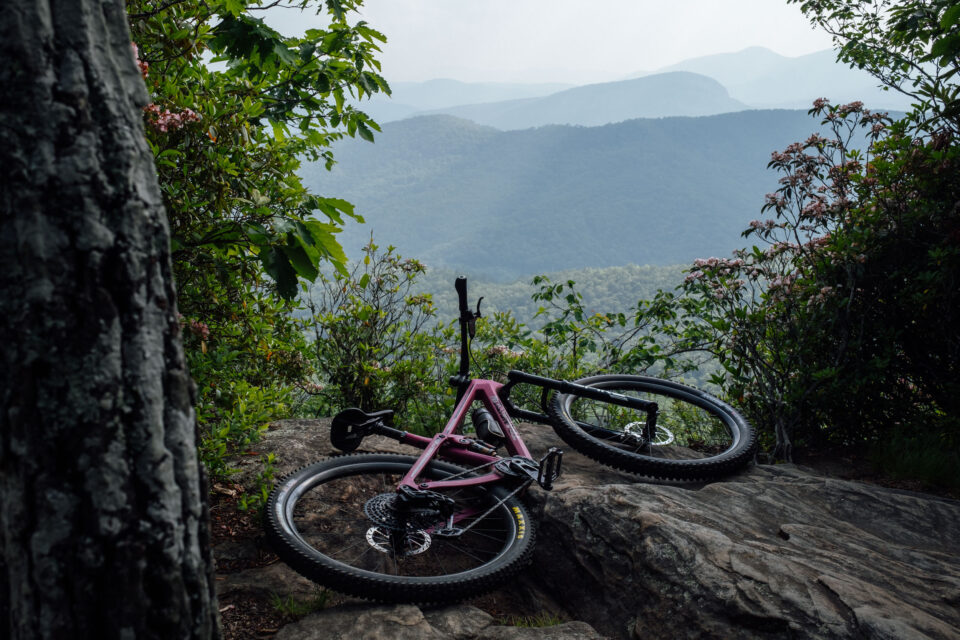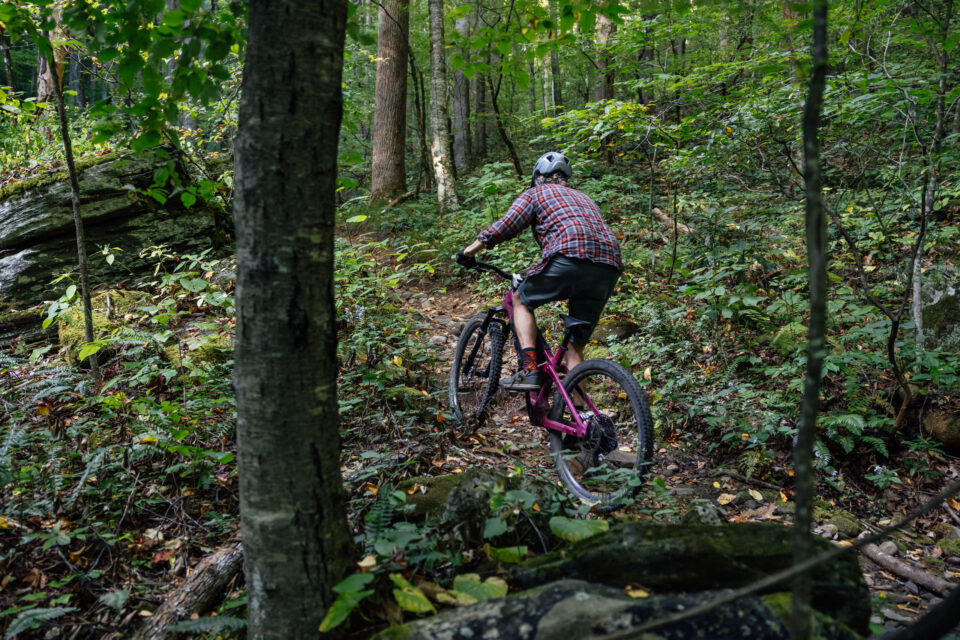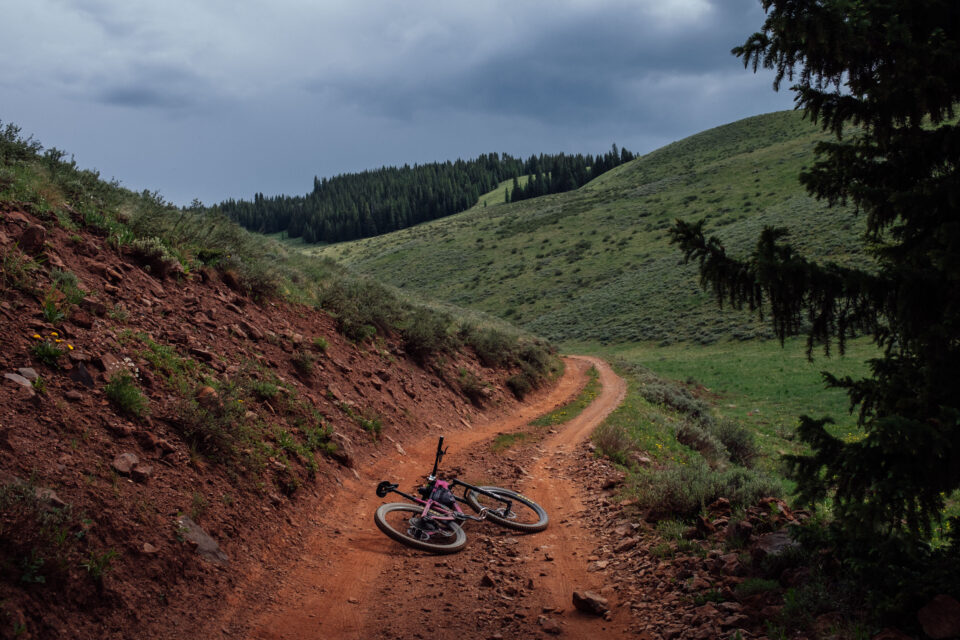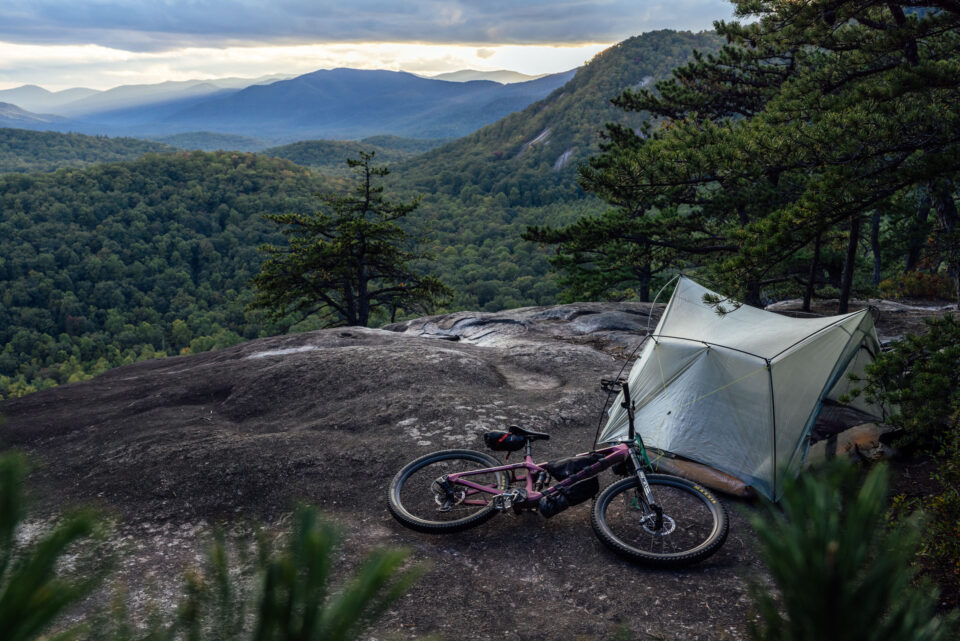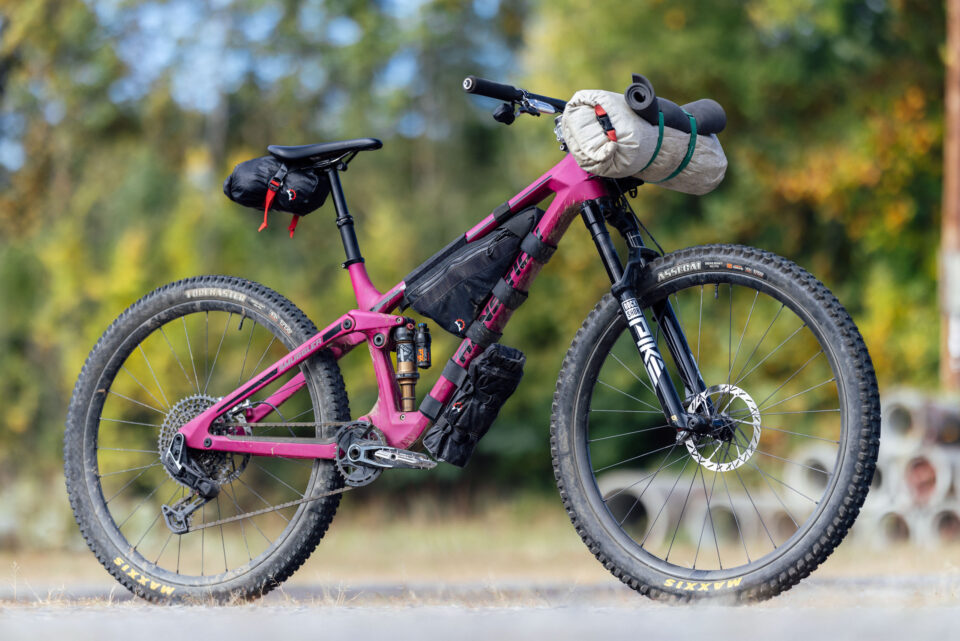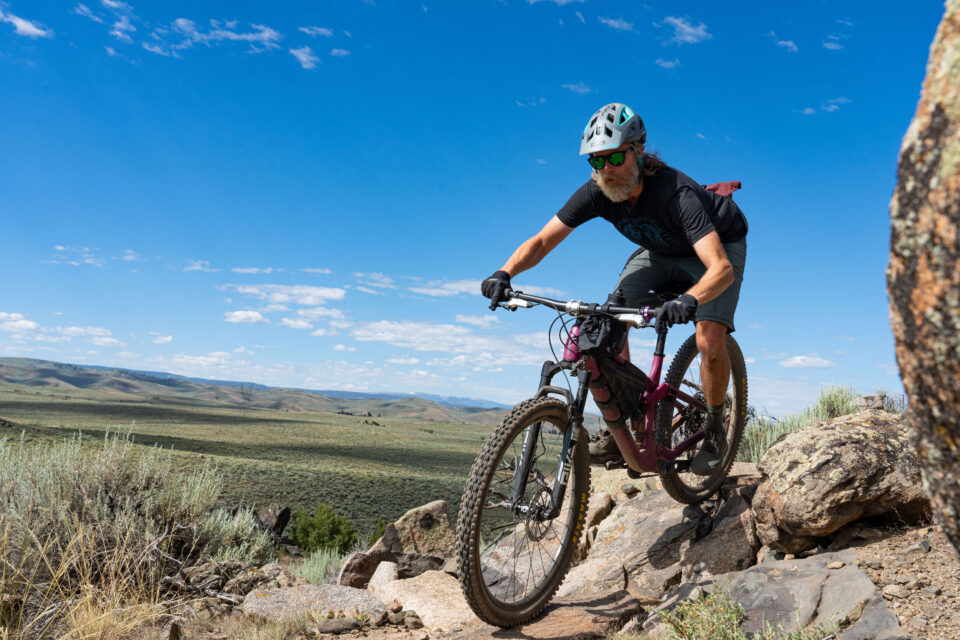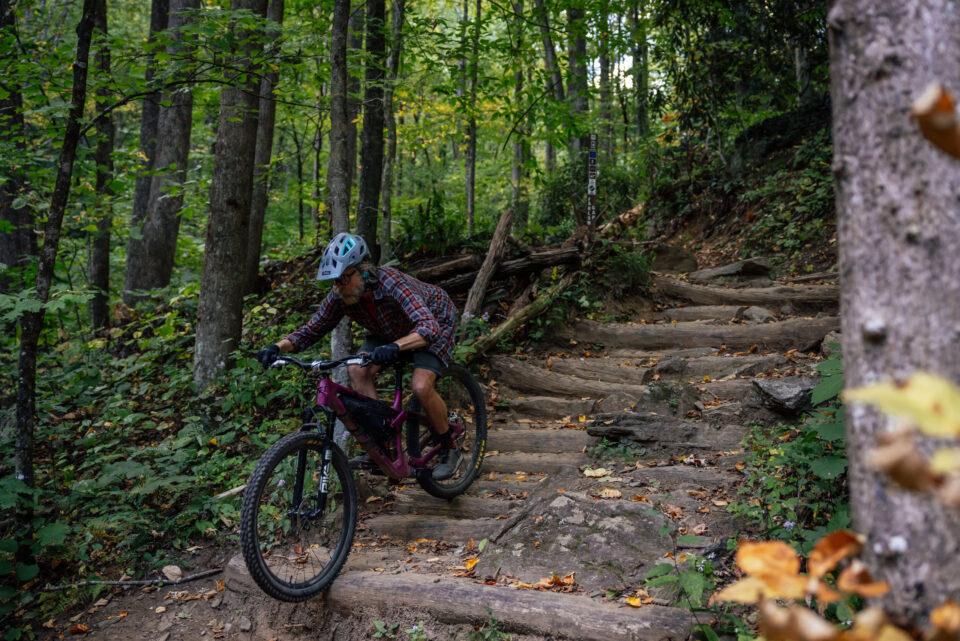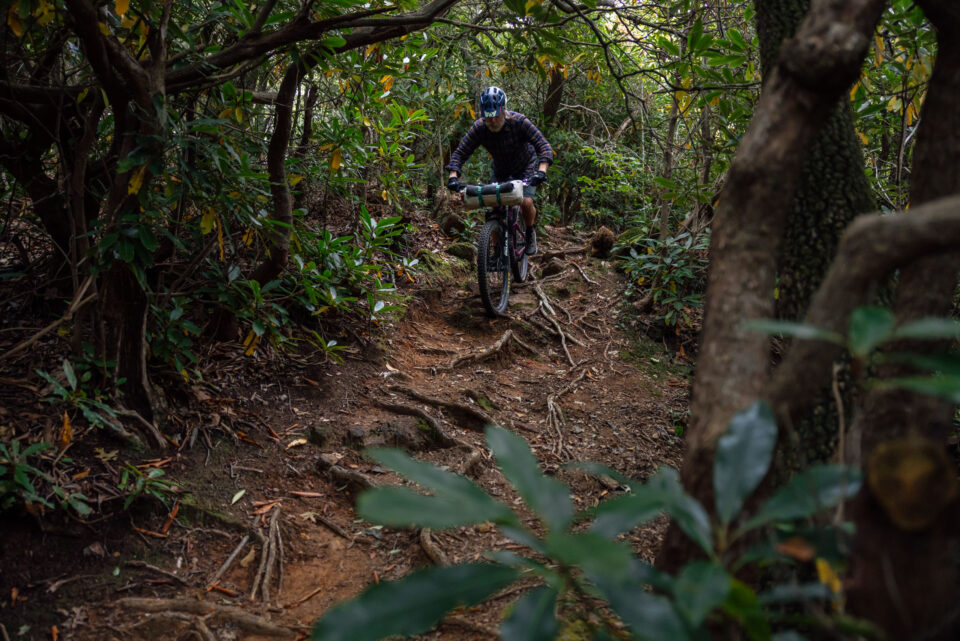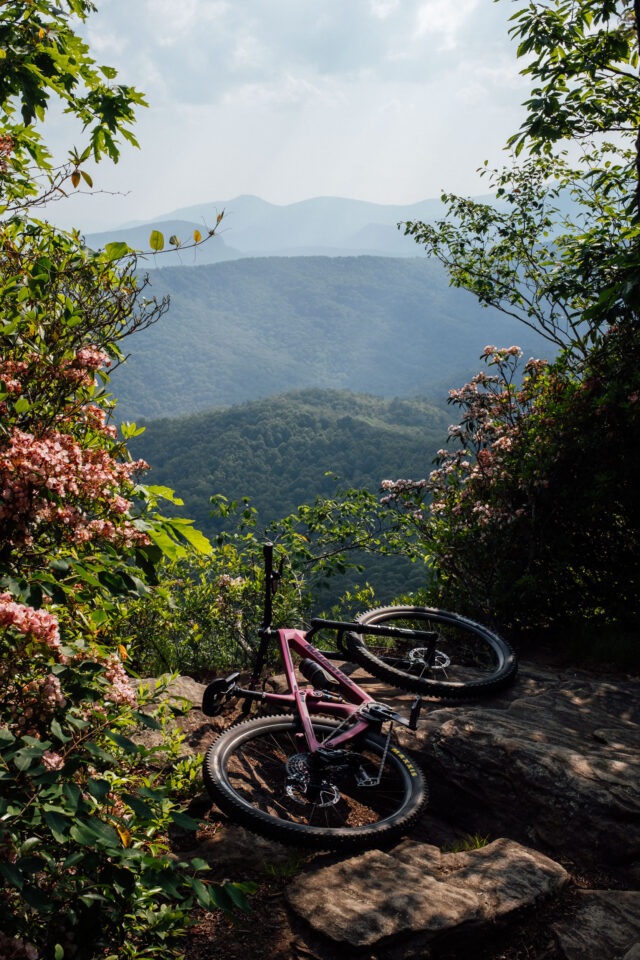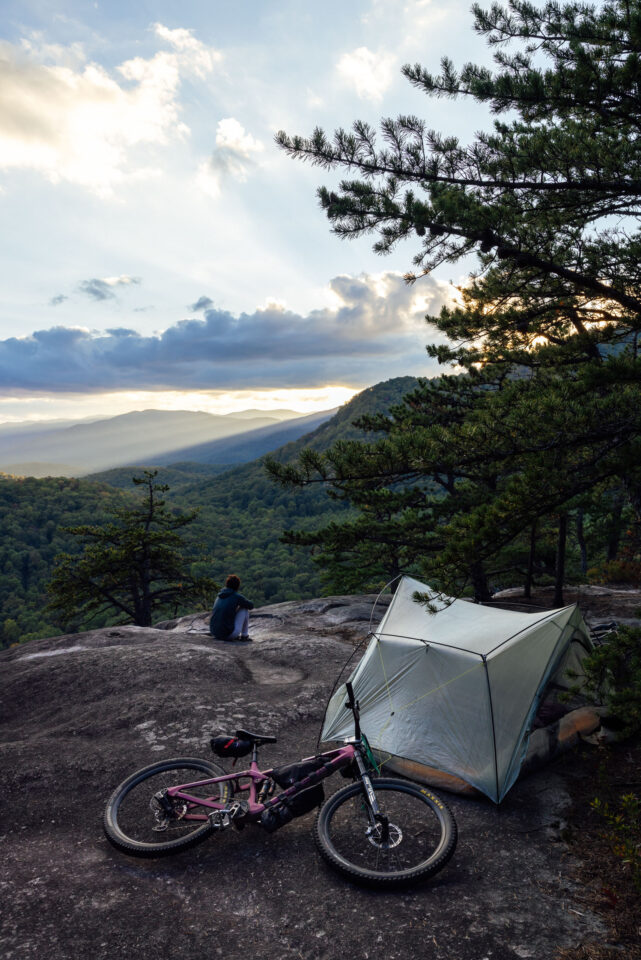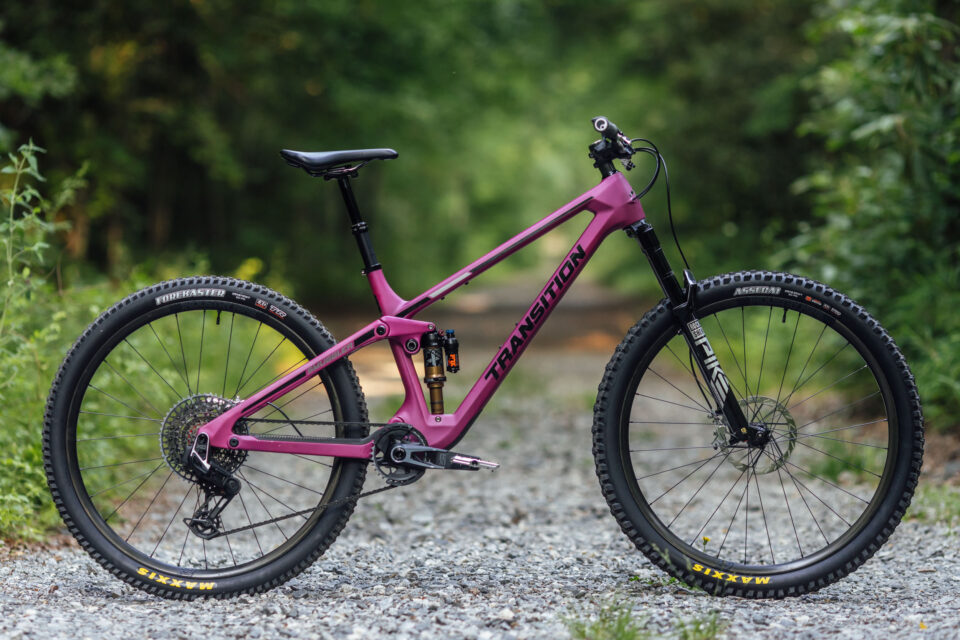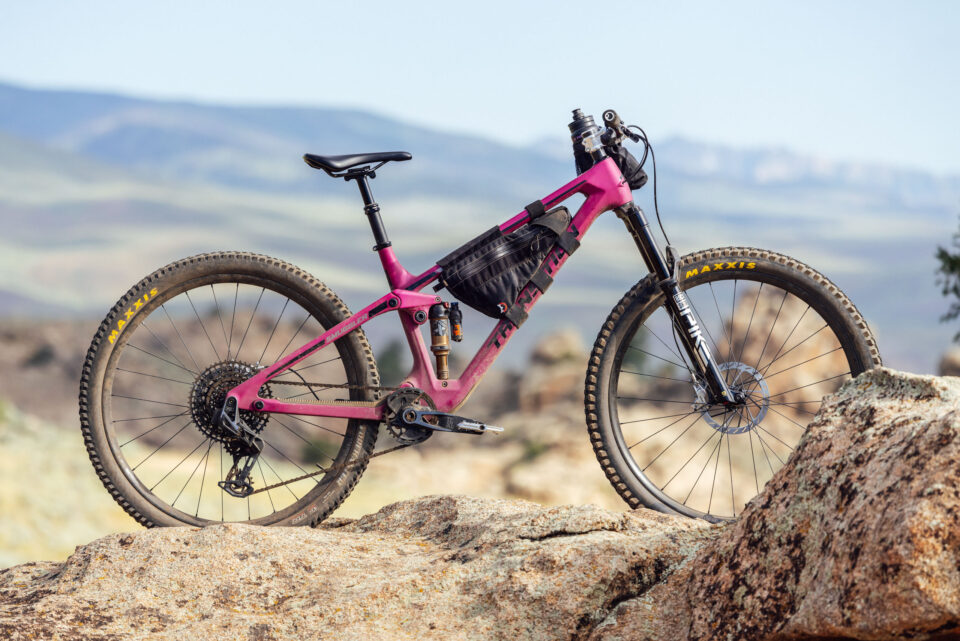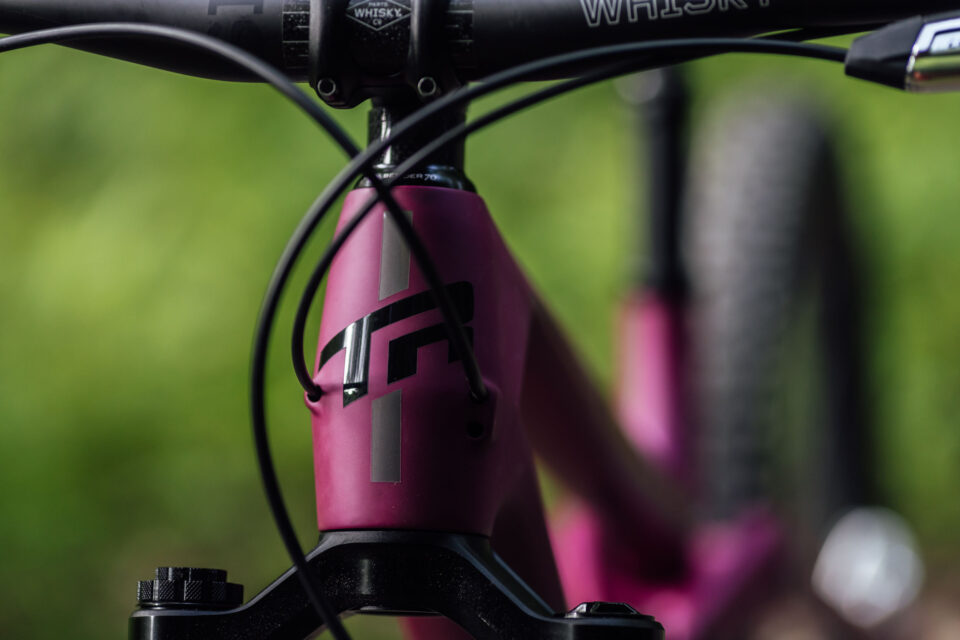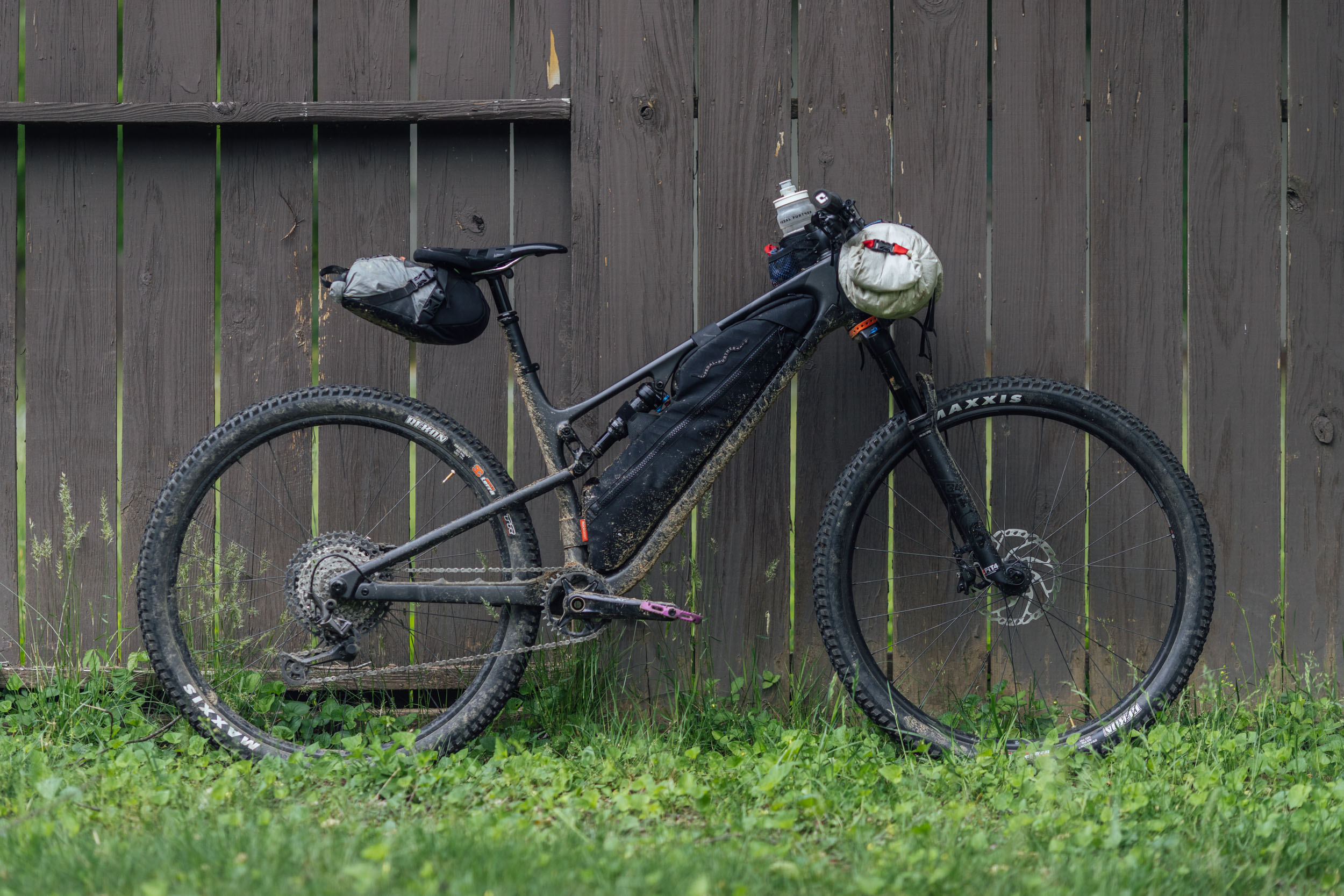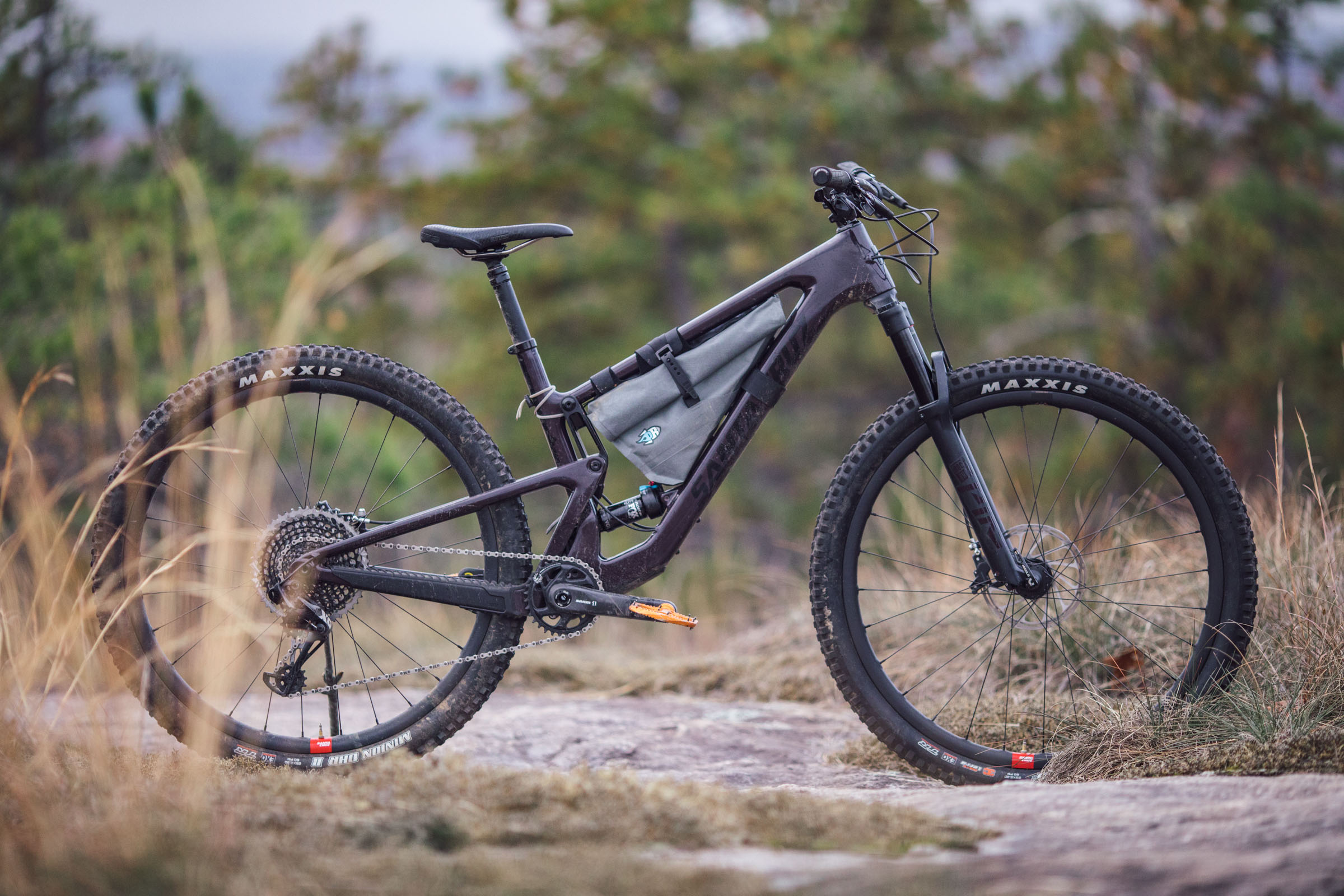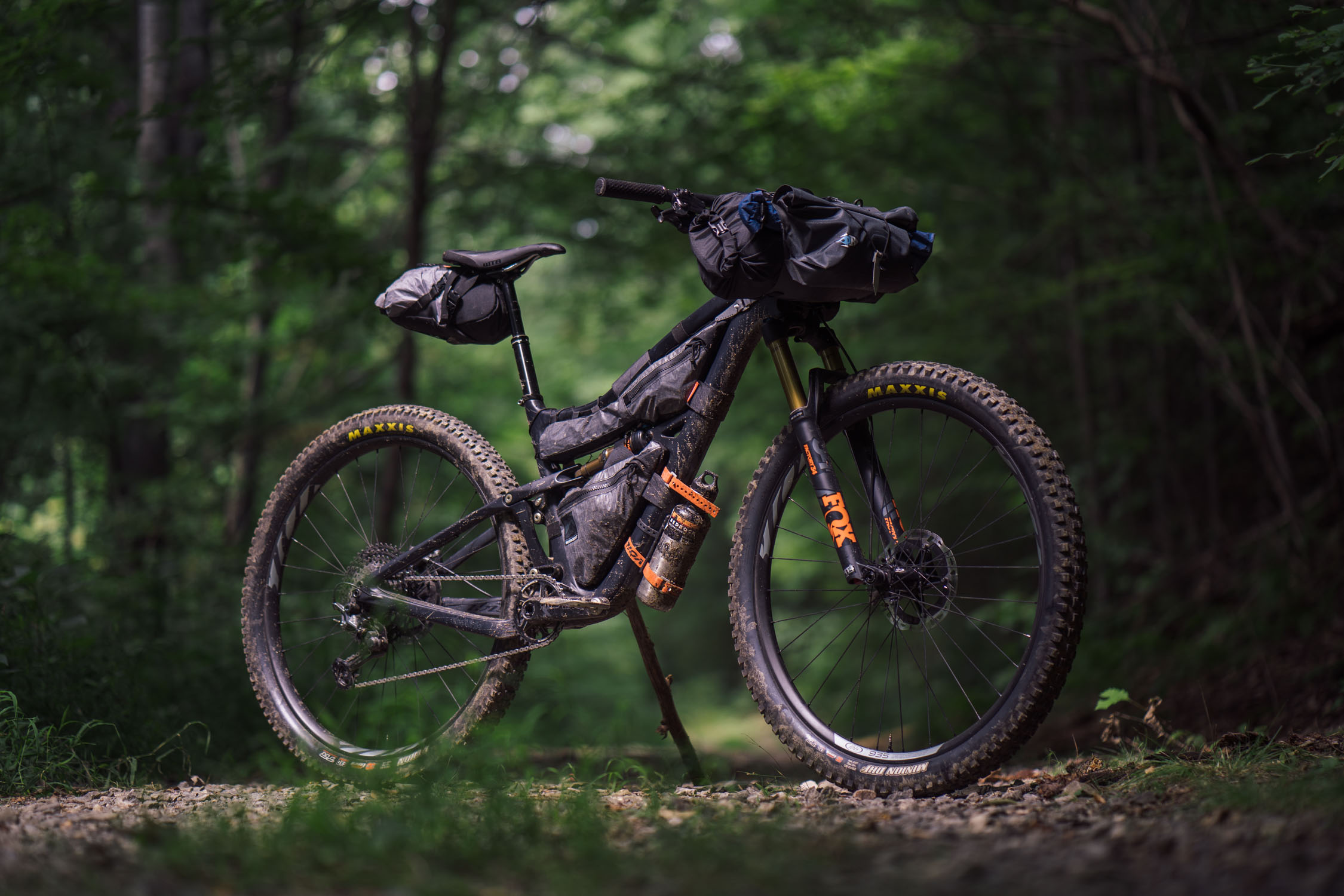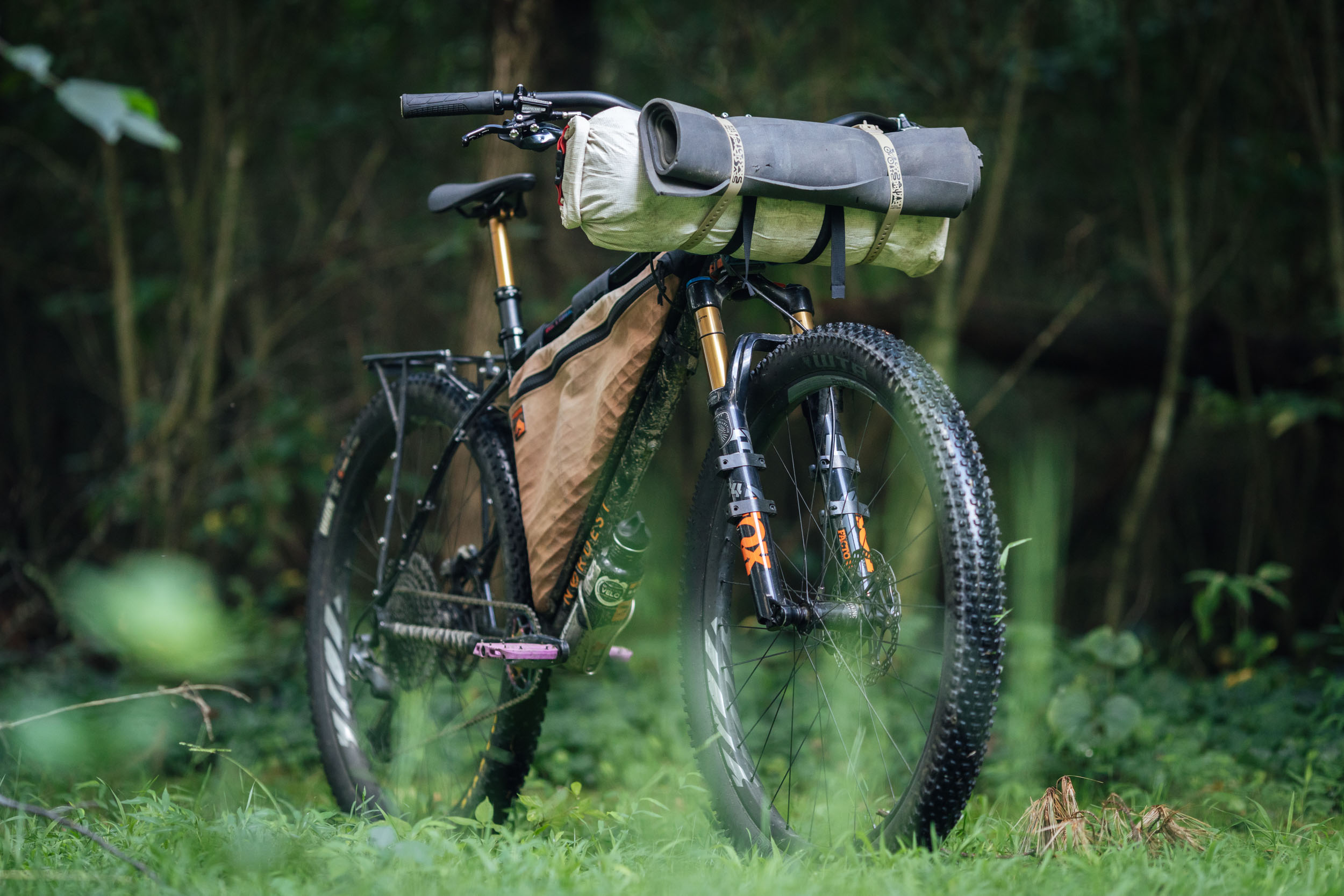Transition Smuggler Review: Seven Revelations
Share This
With only one full-suspension bike on his radar for 2023, Logan was intent on testing the all-new Transition Smuggler, the long-awaited sequel to a cult-status trail bike. After putting many miles on it in Western North Carolina and the Colorado Rockies, find his detailed review here, including seven realizations he had while building it, riding trails, and sleeping next to it in the woods…
I intentionally singled out the new Transition Smuggler as the only carbon full-suspension bike I’d review in 2023. The truth is, I haven’t been testing many full-suspension bikes lately; I’ve been slightly obsessed with British steel hardtails, singlespeeding, and rigid mountain bikes, and I wouldn’t have it any other way. However, curiosity steered me in a different direction this year with the release of the 2023 Transition Smuggler. After all, the original alloy Smuggler gained quite a following a few years back. I can’t even count how many times I heard, “You’ve got to try the Smuggler.” Its popularity stemmed from the fact that it set a benchmark for the short-travel trail bike category early on, pushing the boundaries of what these bikes can do by adopting a no-compromise approach to geometry.
There wasn’t much to compare it with back in 2014, when it was released with 115 millimeters of rear travel and 130 up front. But it was the reinvisioned 2018 version with 120mm of rear travel and Speed Balanced Geometry (SBG) that set the bar. Then, after 2019, it disappeared. While the Spur partially filled that role when it was released in 2020, its 120mm travel frame left a noticeable gap between it and the 160mm Sentinel in Transition’s lineup. The Smuggler reappeared for 2023 with a whole new makeover, including an updated geometry, 130mm of rear travel, a more visually appealing linear tubing aesthetic, and this irresistible Orchid finish.
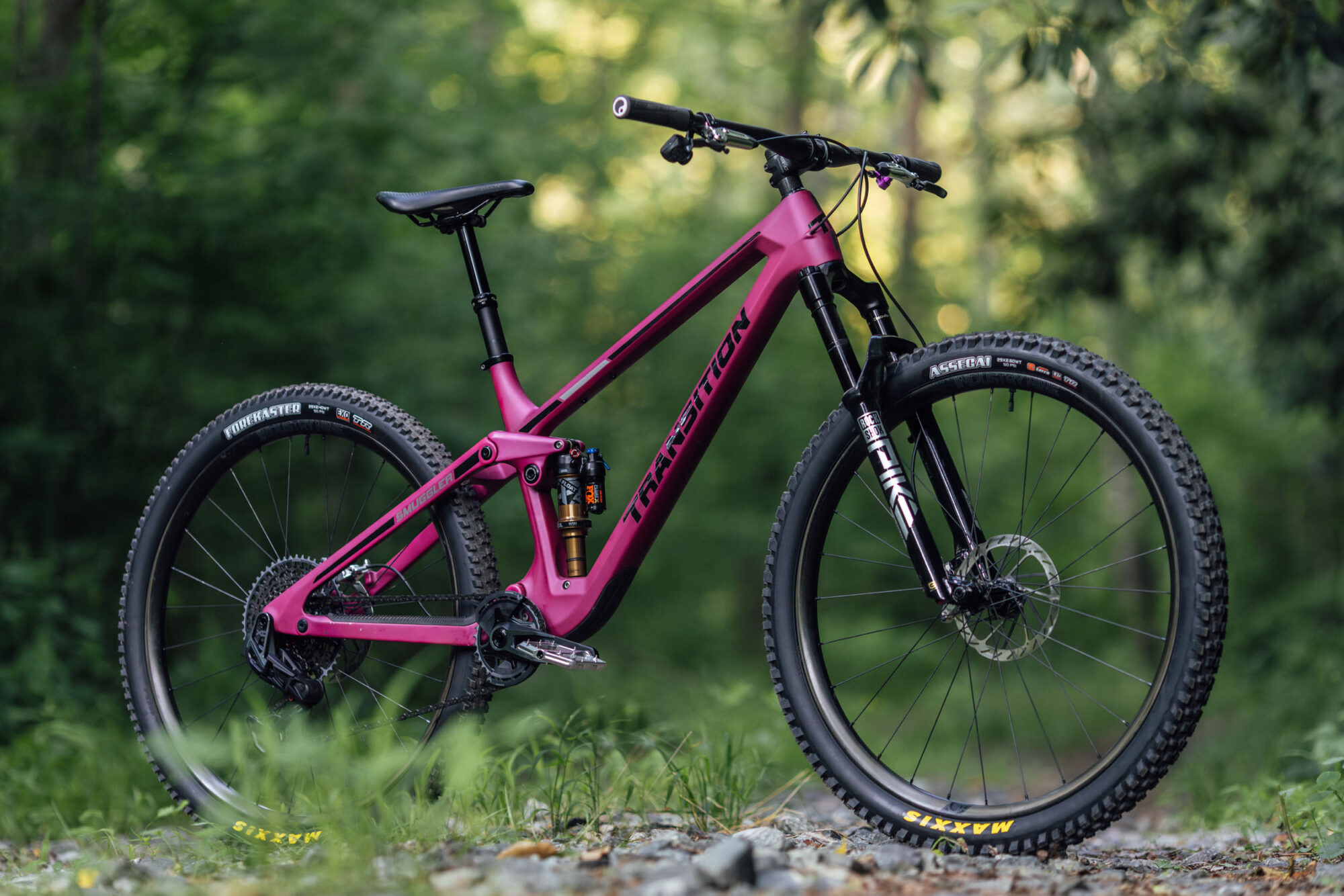
Another reason I wanted to test the Smuggler is that I started to find the 120mm short-travel 29ers a bit predictable. Don’t get me wrong; I appreciate the platform and how these bikes have evolved, but after trying the latest Santa Cruz Tallboy and Rocky Mountain Element, both of which are at the top of their game, they started feeling very similar. I was craving something a little different. Fortunately, the new 2023 Transition Smuggler is indeed its own animal.
- Highlights (Size L)
- Angles: 65° Headtube, 78.1° Seattube
- Reach/Stack: 485/625mm
- Bottom Bracket: 73mm BSA Threaded, 35mm drop
- Hub specs: 148 x 12mm (rear)
- Seatpost Diameter: 31.6mm
- Max Tire Size: 29 x 2.5”
- Price: $3,999 (frame/shock)
As a result, this bike review is going to have a slightly different vibe than most on the site. The Transition Smuggler isn’t exactly a bikepacking bike, and I didn’t approach it as one. That’s not to say it doesn’t belong here; it’s certainly a bike that could be (and was) used for such adventurous undertakings. But it might not be my first choice for most loaded outings, unless it’s a very specific route or situation. Nevertheless, I was intrigued by the Smuggler for the reasons mentioned above, so I’m going to share an unconventional review with all the things I’ve learned, what I like and dislike about this bike, how I built it up, and my experiences riding it on my home trails in Pisgah and on some new-to-me singletrack in Crested Butte, Colorado. I’ll also share how taking this bike on a bikepacking trip helped me better understand its suspension and capabilities. The testing and review process felt more like a series of revelations. So, here’s the rest of the review summarized in eight moments of clarity:
All Review Bikes Should Be Built Up
During the great parts shortage of the COVID-19 pandemic, we encountered numerous bikes that were only available for us to review as frames. It was during this uncertain period that I recognized the value of building a review bike from the frame up. This process often brings to light critical flaws and subtleties that might otherwise remain unnoticed or overlooked. Such catches often include cable routing quirks, eccentric specifications, required adapters, and more. At one point, I even contemplated whether all review bikes should be built from scratch for this very reason. Unfortunately, that’s an impractical approach. Building a bike from the frame up takes significant time and financial resources. Additionally, there are occasions when it’s important to review complete bikes alongside the components selected by their manufacturers.
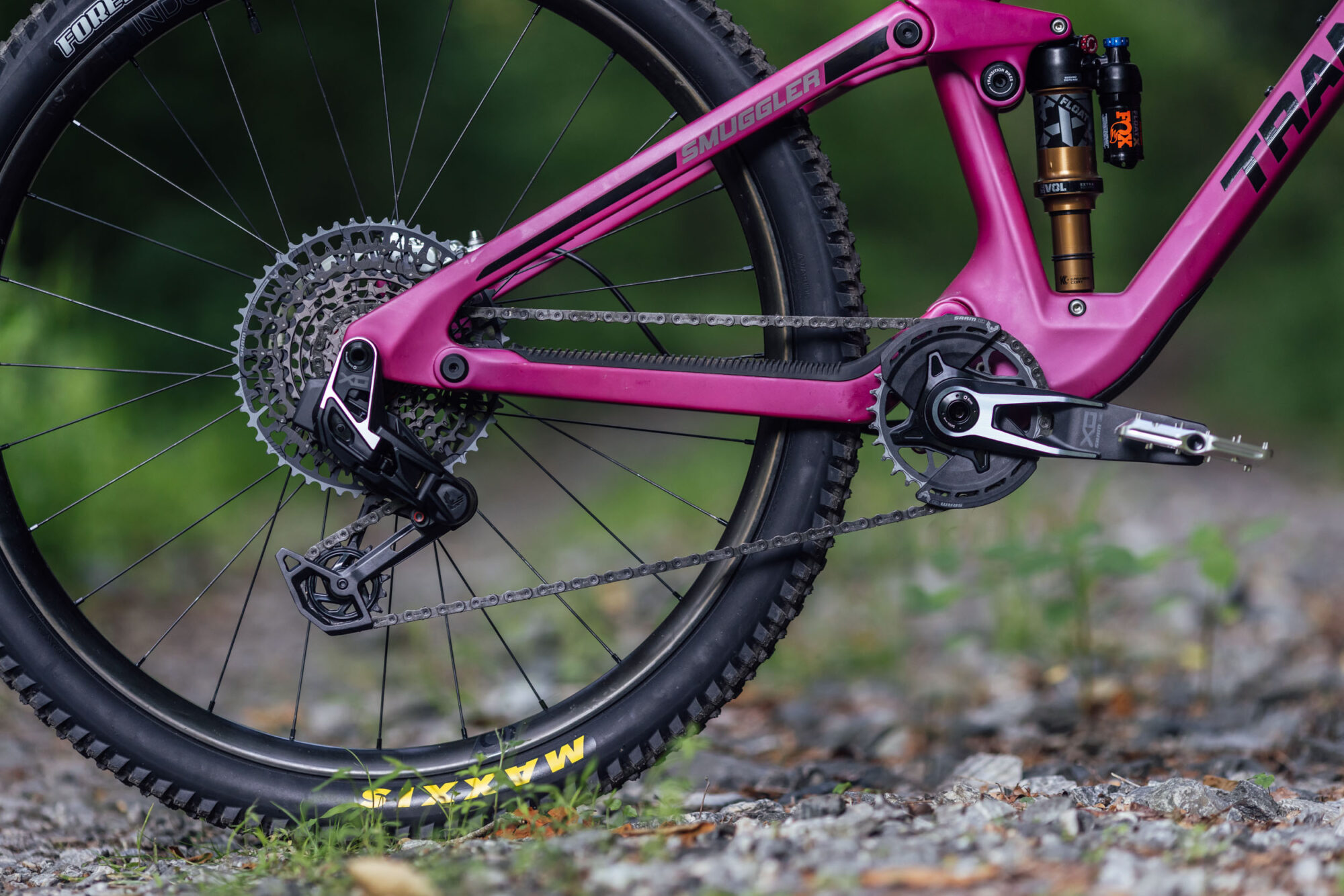
Nevertheless, for this review, I made the decision to purchase a used Transition Smuggler frame that was formerly a demo bike and assemble it with some components I had on hand and others I acquired for the build. I’m glad I did, as it led me to learn a few things that I’ll bring to light here. But first, here’s how I built it. The total build without pedals weighed just a hair over 29.5 pounds (13.4 kilograms):
- Frame: 2023 Transition Smuggler, Size Large
- Shock: Fox Float X2 Factory, 130mm
- Fork: RockShox Pike Ultimate, 140mm
- Wheels: Industry Nine Hydra Endura S Carbon
- Front Tire: Maxxis Assegai 29 x 2.5″, EXO
- Rear Tire: Maxxis Forekaster 29 x 2.4, EXO
- Crankset: SRAM X0 Eagle, 32T
- Derailleur: SRAM X0 Eagle Transmission Derailleur
- Shifter: SRAM AXS Pod Controller
- Cassette: SRAM X0 Eagle Transmission Cassette
- Bottom Bracket: SRAM Dub
- Handlebar: Whisky No.9 35.0 Mtn Bar, 800mm
- Grips: Ergon GXR, Large
- Headset: Cane Creek Hellbender 70
- Brakes: SRAM Level Ultimate Stealth 4-piston
- Saddle: Ergon SM Comp
- Seatpost: Fox Transfer 200mm
- Pedals: Wolf Tooth Waveform, Silver/Polished
One issue I encountered during the build process was a seized non-drive-side lower main pivot bearing. A buddy who’s a mechanic stopped by my shop to lend a hand setting up the brakes and suggested we check the pivot bearings since this has been a somewhat common issue with Transition bikes in the past. Sure enough, we removed the linkage bolt, and that particular bearing felt rough. To get it back in working order, we applied a few drops of Tri-Flow to release it, followed by a thorough cleaning with isopropyl alcohol, and then repacked it with grease. I anticipate repeating this process soon or replacing the bearing altogether. Given that the shock was damaged on this demo frame, my assumption is that it was ridden hard, potentially contributing to the bearing’s shorter lifespan. However, it underscores the need to include the pivot bearings in this bike’s maintenance schedule.
Another weirdness I discovered while assembling the Smuggler was the cable routing for the rear brake (and derailleur if not using wireless). It’s now internally routed, which gives it that sleek look, but it’s kind of a pain. The brake hoses are routed through an opening near the bottom bracket, and you essentially have to disengage the shock linkage to open it up and access it. To make it even more tricky, the tube-in-tube entry ports are positioned within the recess, requiring good eyes and a little fishing to get the hose through the lower part of the frame. It was especially tricky without having any guide lines. Most people who buy a complete won’t have to deal with this, but folks interested in upgrading their brakes might. Be sure to attach and pull guide lines through when removing hoses.
Little Numbers Make a Big Difference
The last full-squish bike I tested before the Smuggler was the Rocky Mountain Element I mentioned earlier. One of my big takeaways from my time testing that bike was essentially, “holy shit, it’s fast.” I’m convinced I would have set personal records on several of my usual downhill trail segments had I used Strava. The reason for that speed wasn’t because it had a lighter frame or faster-rolling tire tread. It was how confident I felt while going fast. At that time, it was the most confidence-inspiring short-travel full-suspension bike I had pedaled. Then this Smuggler came along. Looking at the numbers, the Smuggler and Element (and the latest Santa Cruz Tallboy) aren’t too dissimilar:
| Metric | Transition Smuggler (L) | Rocky Mountain Element (L) | Santa Cruz Tallboy (L) |
|---|---|---|---|
| Stack | 625 | 627 | 630 |
| Reach | 485 | 480 | 473 |
| TT Length | 617 | 631 | 623 |
| Head Angle | 65° | 65.5° | 65.5° |
| Seat tube angle | 78.1° | 76.5° | 76.6° |
| Front Center | 809 | 798 | 790 |
| BB drop | 35 | 40 | 41 |
| Chainstay length | 440 | 435 | 438 |
| Wheelbase | 1250 | 1231 | 1227 |
The reason all three of these bikes possess the ability to boost confidence—and go faster as a result—can at least partially be attributed to the legwork Transition did back in 2017. When they released their 2018 lineup, they also introduced their Speed Balanced Geometry (SBG), a fundamental shift in trail/enduro bike geometry that the entire industry followed. Long story short, after trying and logging many small tweaks to dial in the ride he wanted, Transition’s Lars Sternburg came to the realization that the magic formula came in the form of a longer front-center, steeper seat tube angle, slacker head tube, and longer wheelbase.
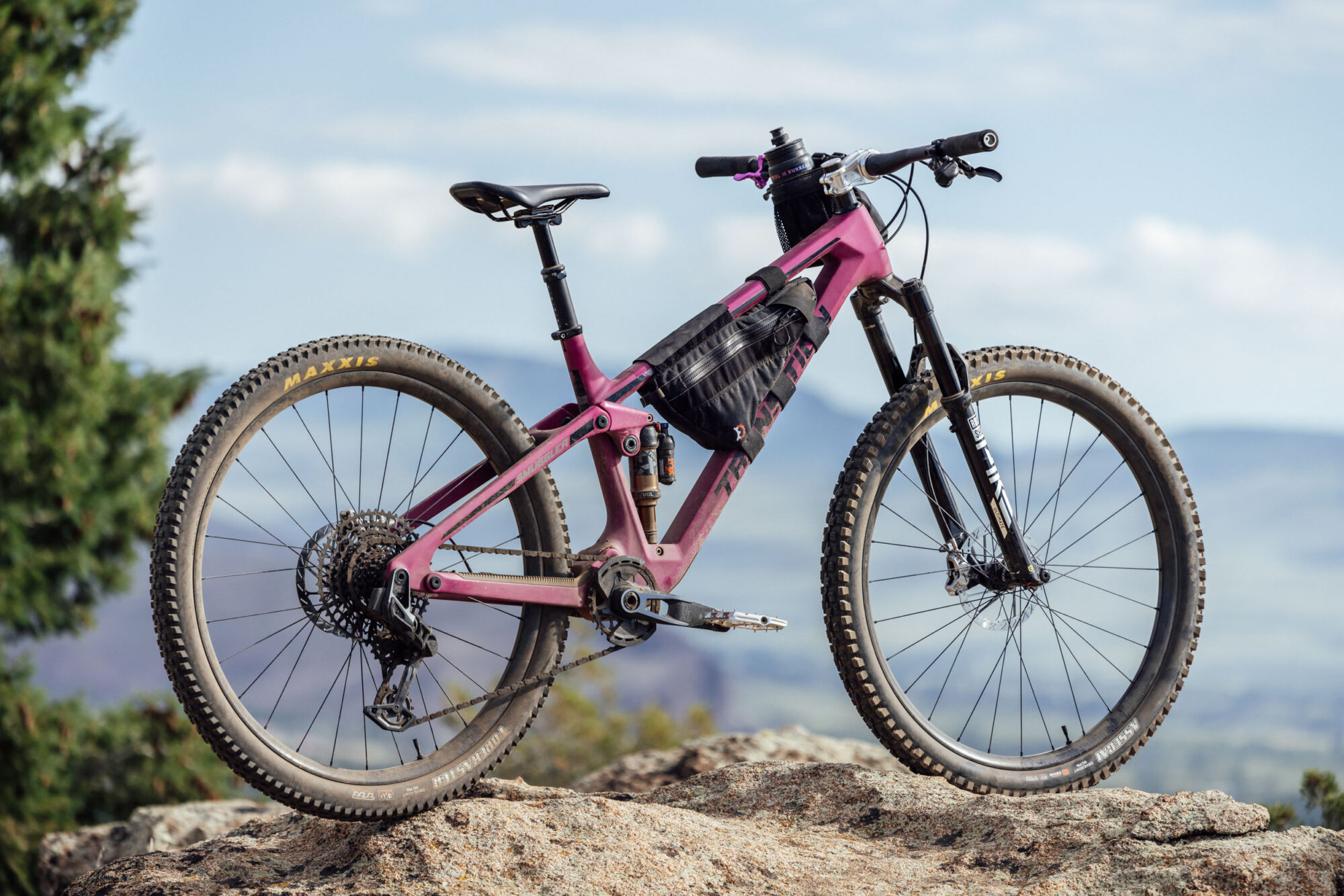
However, to center the rider between the wheels, ensure front tire traction, and maintain the bike’s ability to climb, the recipe called for a shorter fork offset than the standard 51mm rake that was available for 29ers at the time. There were other bike companies making similar geometry tweaks around the same time, but Transition unquestionably helped push RockShox and FOX toward the shorter 44mm offset, a direct result of what Lars and Transition were doing. When you compare the 2018 Smuggler with the same make of the Santa Cruz Hightower, for example, it’s pretty clear how different it was at the time.
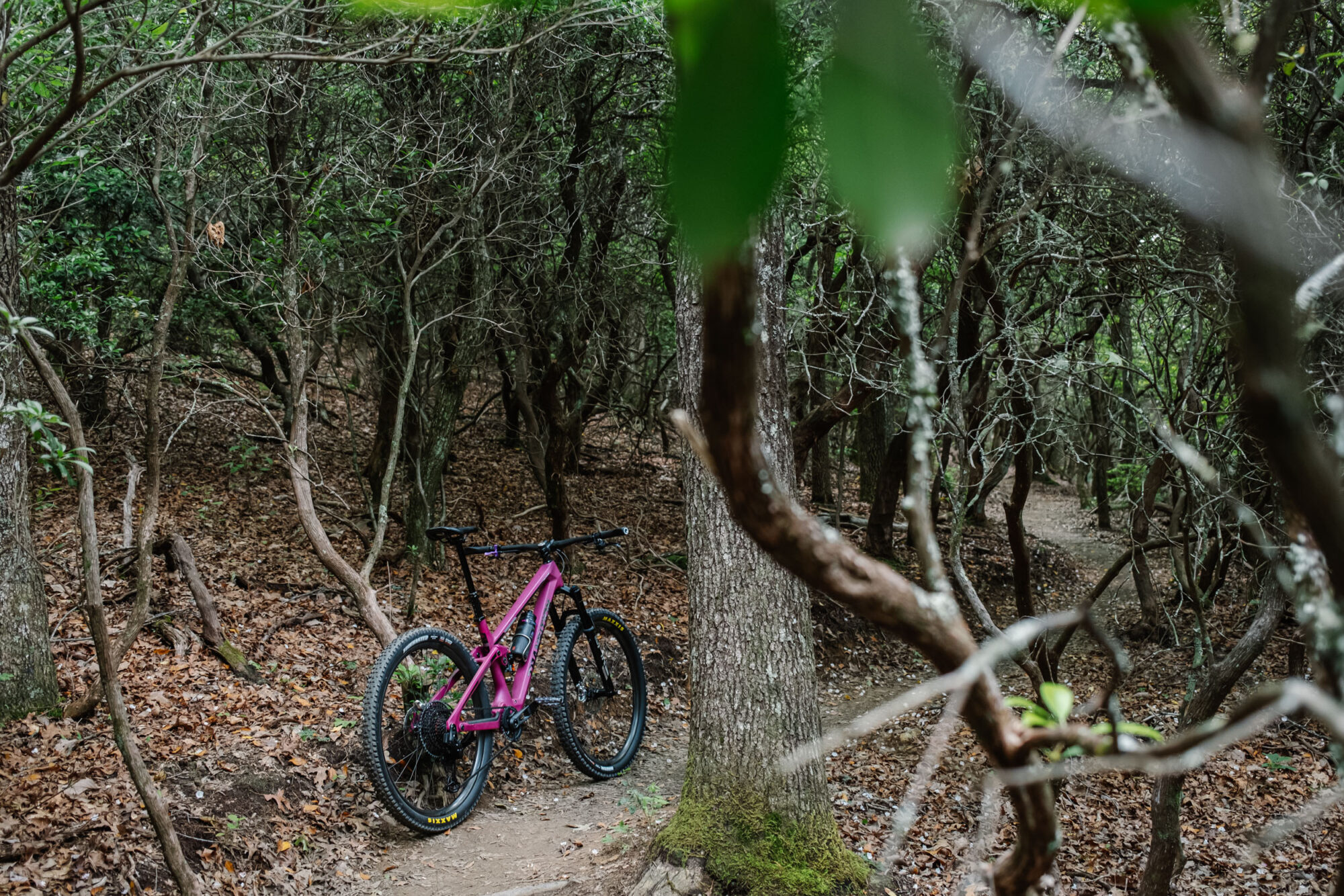
It’s hard to dismiss the significance of this geometry shift when riding such bikes. They’re completely different from the mountain bikes that came before them. And as you can see with the more dramatic metrics in the new Smuggler’s geo, Transition decided to take it a step further. Out of the gate, it was pretty clear that the 2023 Smuggler was its own animal by comparison. It’s very fast going downhill, stable, and has better traction while cornering than any full-suspension bike I’ve ridden. My early reports to riding buddies were that it made our local trails far easier than they were a few weeks ago, which I’m not entirely sure is a good thing.
Confidence Can Be Dangerous
Funny enough, the Smuggler actually felt slower than the Element, as if I was traveling at a lower speed. It didn’t take long for me to figure out that this was an illusion—akin to driving a larger, unfamiliar car that gives the impression you’re just casually cruising along, but then you suddenly realize you’re doing 80 miles per hour. This became evident whenever I unexpectedly came in too fast on familiar corners, technical sections, or rock gardens. Fortunately, the Smuggler had the ability to shrug off most of this in stride, but it wasn’t without a few pucker moments at first. For someone who’s never worn full pads and usually prefers slow and deliberate tech over trying to break speed records on tough downhills, the Smuggler has enough travel and is plenty of bike for my skill level, and it will be more than enough for just about anything I’m going to ride. Of course, I know more aggressive riders might see this bike as a short-travel bike and know where the Smuggler’s line is, and that’s where Transition’s bigger Sentinel and Patrol come into play. That being said, it’s possible to increase the Smuggler’s travel, similar to Transition’s other bikes. You can easily lengthen the rear by 10mm using the travel limiter within the FOX Float X and Transition okays it for a 150mm fork, thereby transforming a 130/140mm travel bike to 140/150mm. The only complicating factor is that the FOX 34 and Rock Shox Pike both max out at 140mm, so if you’re using one of those forks you’d have to upgrade to something like a FOX 36 or Lyrik.
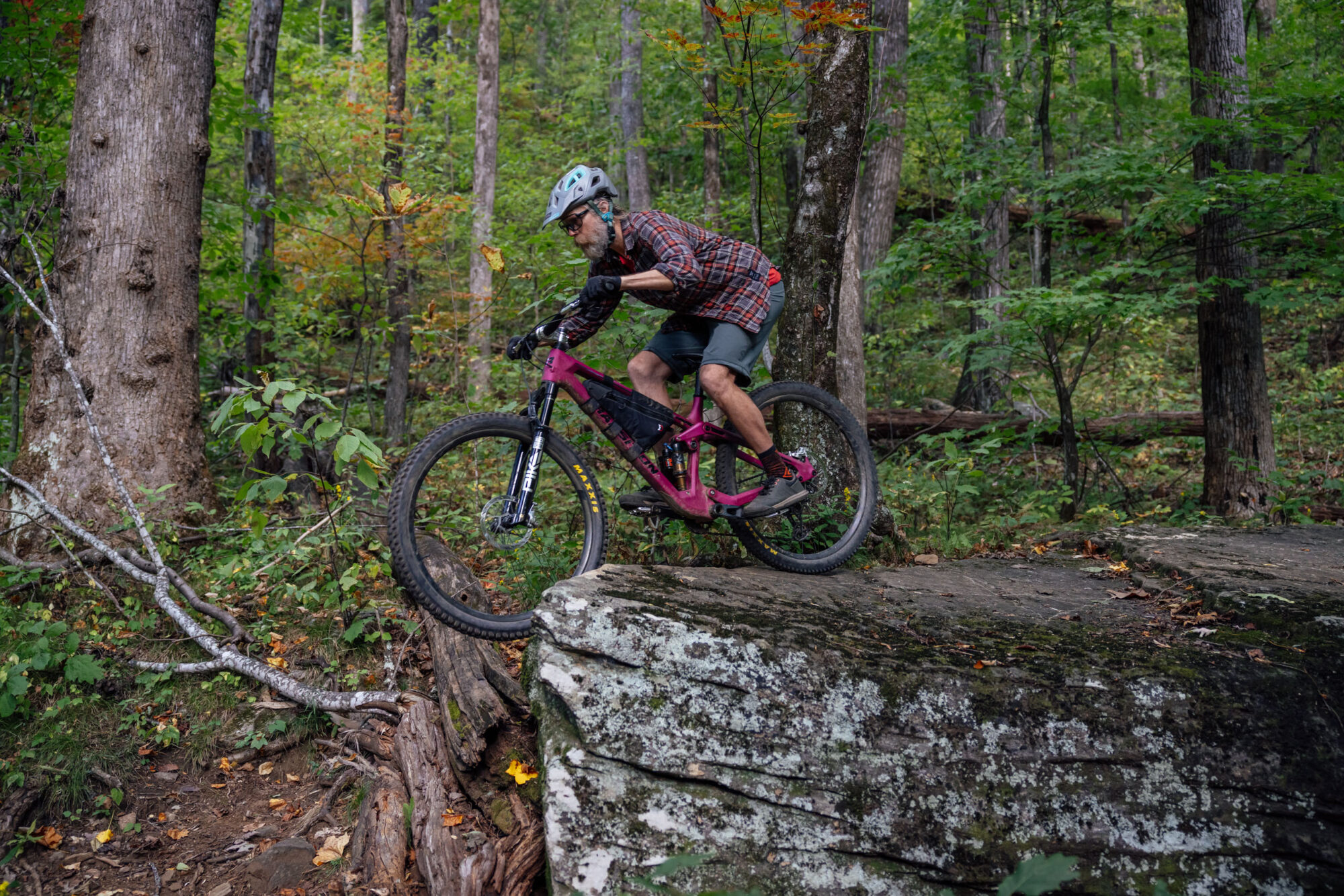
Steep Seat Tubes Come With Baggage
At 78.1°, the Transition Smuggler boasts the steepest seat tube angle (STA) in this group, surpassing the others by a full 1.5°. In fact, it has the most aggressive STA of any bike I’ve ever tried. The first curveball this presented was an issue with fit. It’s important to note that it has the longest reach yet the shortest effective top tube length among the group. When dealing with such dramatically steep STAs, reach measurements become less relevant in assessing fit—the saddle is positioned further toward the vertical axis of the bottom bracket (where reach is measured from), effectively shortening the distance from the saddle to handlebars. I could have probably gone for a size XL in the Smuggler, but I opted for a large as I wanted to maintain maneuverability. Initially, the large felt a bit short for me, but by using a 60mm stem instead of the typical 50mm one, I was able to get it dialed in. I’ve since gone backward and replaced what I had originally with a handlebar that has a little more rise and backsweep (10°). This gives the bike a little more of an upright posture, which seems to work better for me with the steep STA.
One benefit to the 78° seat tube is that it positions the rider forward on the bike and helps weight the front wheel when tackling technical or steep inclines, a quality that I really appreciated on slow, methodical climbs. However, it’s worth noting that it places the saddle in a precarious position where it’s often in the way—all up in your butt—when you’re climbing out of the saddle. This could have been amplified by the fact that I have an ultra-long inseam, but I ended up swapping to a short saddle, and it was no longer an issue.

Learn While Sleeping in the Woods
In complete transparency, I almost committed to writing my full Transition Smuggler review without taking it bikepacking. Alas, that would have been a travesty; I regularly put more than 1,000 miles on test bikes, and always take them out on more than one multi-day trip because its in those depths where subtleties and realizations come to light. The interesting thing about my experience with the Smuggler is that I didn’t fully gel with this bike until I took it out bikepacking, which ultimately helped me shape my experience with it unloaded.
The epiphany came from the suspension set up. I’m usually relaxed in my approach to tweaking and dialing in suspension, setting it based on sag and/or recommendations, and rarely messing with the dials or pressure. Using the SRAM TrailHead suspension set up app, I set the RockShox Pike to the recommended pressure with 11 clicks of rebound and I set the FOX Float X shock up with approximately around 30% sag—I tried to eyeball it between 25 and 35%, Transition’s recommended range for “firm and snappy, to more supple and active.”

One complaint I had early on with the Smuggler was that it felt a little sluggish while climbing. This wasn’t the case on all climbs, but it seemed more evident during moderately steep extended gravel or doubletrack inclines where it felt a little draggy. The other issue I had was with the Smuggler’s bottom bracket height. The Element and the Tallboy both had similarly low BBs—which I generally like—that require some finesse on technical climbs, but the Smuggler was a little more pronounced. Even with 170mm crank arms, pedal strikes were above average while spinning up techy bits over roots and rocks. I tweaked the pressure on a couple occasions, bumping it up toward 25% sag, again just eyeballing it. Better on both accounts, but not ideal.
Then, I decided to overcompensate the air pressure for my first overnight trip with the Smuggler. This time, I used calipers and adjusted the fork to 25% sag and the shock to about 23% sag with the bike fully loaded (wet weight with food and water). During that ride, I noticed that it seemed to feel a little more efficient while climbing, and I didn’t have as many pedal interference issues on chunky climbs.
More Travel Requires More Attention
This realization led me to pay close attention to the air pressure once the bike was unloaded. I tweaked it several times over the course of a few afternoon trail rides based on sag and was able to find a solution that worked for me at 26% sag, which I measured at about 13mm. It’s important to note that I ultimately based this on the 50mm of travel on the shock (210×50 Float X), and not the total stanchion length, as FOX insinuates on their tuning diagram. That came to 202 PSI on the digital gauge. With that, I used somewhere around 90% of the rear suspension, which seems about right as I’m not an overly aggressive rider. I also regularly flipped the two-position switch to the Firm setting for extended climbs, which seemed to make a notable difference. Considering how little attention I paid to setting up the suspension on many 120mm bikes, the reality is that bikes like the Smuggler—short-travel, descent-forward bikes that still try to maintain climbing performance—might just require a little more scrutiny when it comes to set up and pressure.
Stability and Handling Can Go Hand in Hand
I’m not going to get in the weeds with the pros and cons of Horst link (four-bar) versus other suspension designs. There are good and bad implementations of many suspension platforms, and four-bar designs are still one of the most popular and well-loved. And there’s plenty of exhaustive info on the topic elsewhere. Overall, I think the Smuggler’s Giddyup/Horst link suspension design is good. I felt like it’s slightly more tuned toward descending than it is to climbing, but it seems like smart compromises were made for the sake of finding a unique balance. And despite my grouses early on with pedal strikes and climbing performance, one thing that impressed me about the Smuggler is its traction and stability while pedaling up steeper inclines. I think this partially owed to both the suspension design and the geometry decisions behind the bike. I noticed this early in the testing period, but it really stood out as I was pedaling up a challenging climb while bikepacking. In short, I cleaned a pretty tricky section of singletrack that often requires a little hiking because of traction loss or just the loss of balance and power. This time, I made it with a full load via a slow and concerted effort that was a matter of patience and line choice enabled by excellent traction and composure.
The Smuggler’s traction doesn’t stop at its ability to claw up hills, either. As I previously hinted, this bike corners better than any full-suspension bike I’ve ridden to date. It has traction for days, which helps, but it also handles incredibly well. That surprised me, bearing in mind how long this bike is. And considering how much of a confidence-generator it is on rough and technical trails, I found it to be even more impressive on fast, swoopy singletrack where quick carving and pushing through turns was the name of the game. It has a knack for maintaining flow on purpose-built trails that have some up and down and plenty of corners.
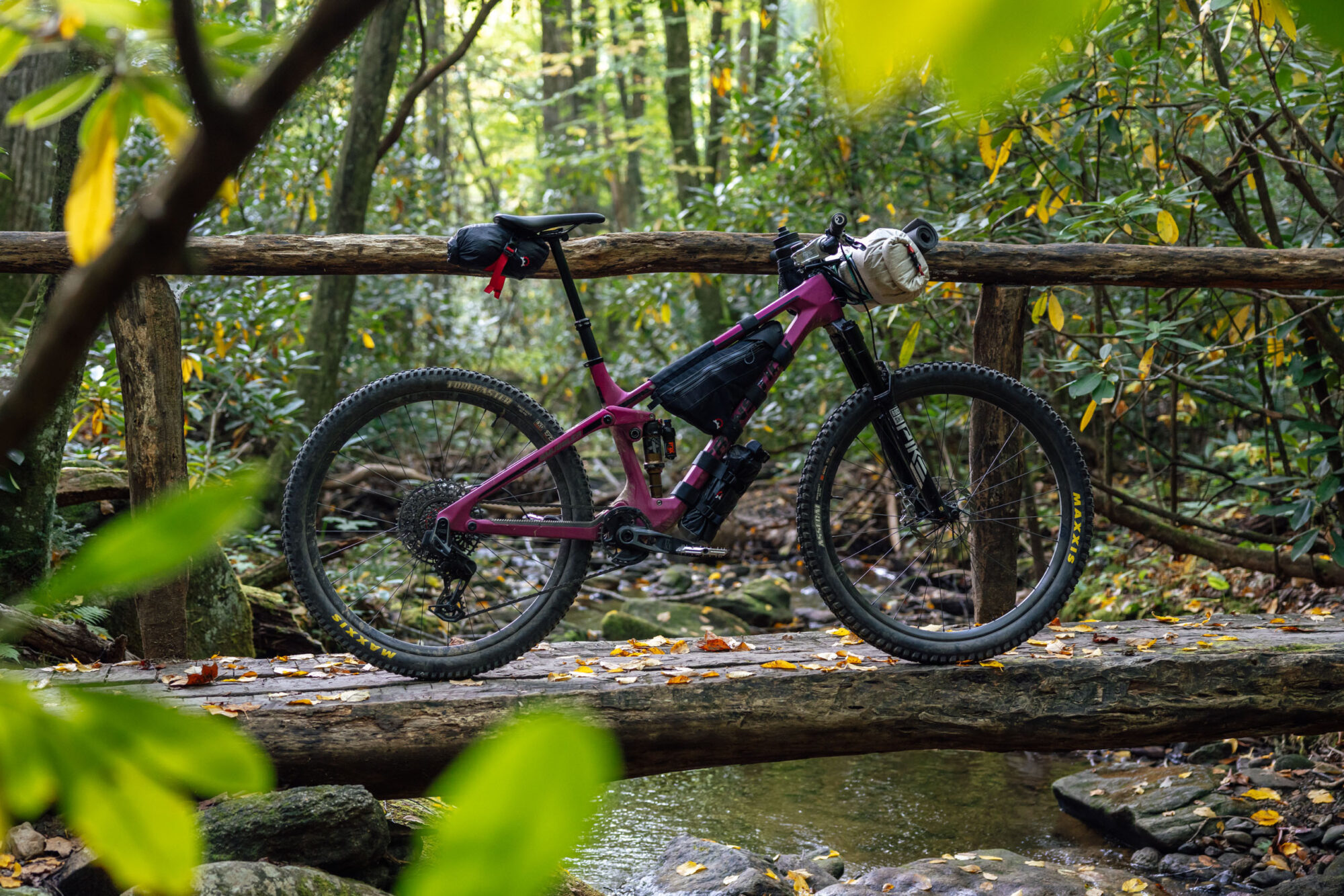
In the end, I still don’t think the Smuggler is the fastest or most sprightly feeling climber, particularly on gravel roads, and particularly when looking at it next to an all-mountain hardtail or an XC-esque short-travel bike. And I could easily improve the slow feel on gravel with faster-rolling tires than the the Forekaster the rear and sludgy 2.5” Assegai up front. However, when climbing the kind singletrack that keeps you on your toes, it feels like a loaded coil that’s always willing and able to pop into action and reward you for what you put into it. And considering how stable it is on climbs, how elegantly it handles technical ascents, and how brilliantly well it corners and descends, I don’t think it compromises much. Even thinking back to some of my first rides on it when I had the suspension set up way too soft, I was immediately impressed with how efficient it felt.
- Model/Size Tested: 2023 Transition Smuggler, Large
- Actual Weight (as built): 29.5 pounds (13.4 kilograms)
- Place of Manufacture: Taiwan
- Price: $3,999 (frameset)
- Manufacturer’s Details: Transition Bikes
Pros
- Ridiculously confident and fun going downhill
- Corners better than any full-suspension bike I’ve ridden, with surprisingly nimble handling, traction to back it up, and well-balanced steering
- Longer chainstay length, front-center, and wheelbase make it a super stable bike with excellent traction, both climbing and descending
- Feels lively and poised while climbing dynamic and technical sungletrack
- The ability to upgrade the bike’s travel to 140/150mm is nice
- Linear frame aesthetic is better looking than previous curvy design, and Orchid color is hard to beat
Cons
- Can feel slightly sluggish on slow climbs, particularly on gravel
- Bottom of shock linkage can collect mud and grit
- Non-drive side pivot bearing is prone to early wear
- Requires careful attention to shock and fork tuning (not really a downside, but something to be mindful of)
- Awkward cable housing entry/exit at head tube doesn’t jive well with a handlebar bag and rear brake/derailleur routing is tricky
Wrap Up
That last paragraph above more or less sums up what I think the Transition Smuggler does well, and the pros and cons tell the rest of the story. The Smuggler eloquently straddles the line of being an incredibly fun bike that prioritizes descending at a very high level without compromising its ability to do everything else proficiently. So, let me wrap things up with some thoughts on who this bike is for.
Folks who have the Transition Smuggler on their radar are probably either (A) intermediate riders looking for a bike that still pedals well but is a little bigger and more qualified to tackle tougher trails than they’re used to and/or looking to improve their moxie on challenging singletrack, or (B) experienced riders interested in replacing a multi-bike situation that includes a longer-travel rig and perhaps a secondary XC bike with one bike that does it all, or (C) new mountain bikers who are looking for something to help them become the rider they want to be.
I can’t really speak for folks transitioning (no pun intended) from a long-travel bike. I’m a hardtail guy at heart, and the Smuggler is as big of a bike as I’d ever want or need. I certainly never felt that there was anything in my repertoire that it couldn’t handle. In my view, it’s kind of the perfect do-everything bike for our trails here in Pisgah. As for (A) and (C), I’d recommend this bike to anyone looking to improve their mountain biking skills or even folks relatively new to the sport, particularly those who are interested in learning to ride trails that push their skill level. I even suggested to my partner Virginia that she demo one for a day to see what she thought; she continues to improve her technical skills, and in my eyes, the Smuggler would be a significant upgrade to her current Ibis Ripley AF. Unfortunately, that might mean we have matchy-matchy bikes, which neither of us is thrilled about.
Further Reading
Make sure to dig into these related articles for more info...
Please keep the conversation civil, constructive, and inclusive, or your comment will be removed.














